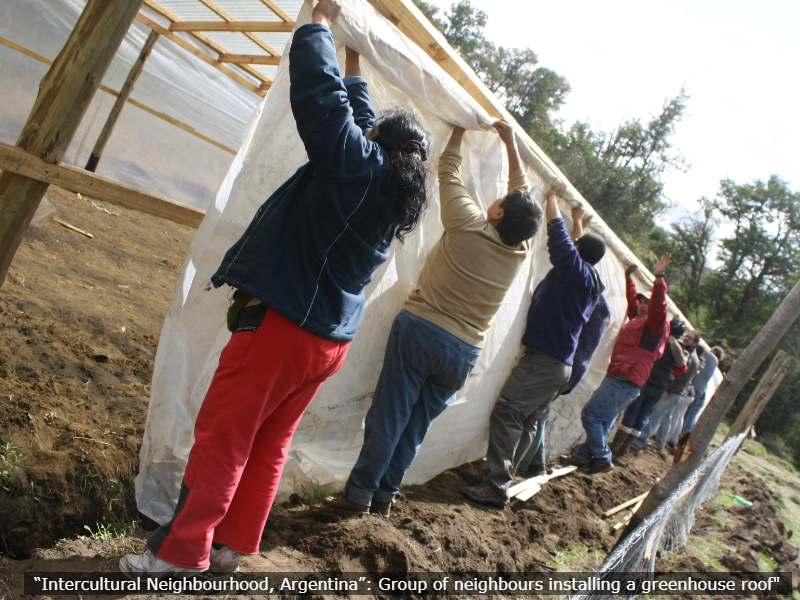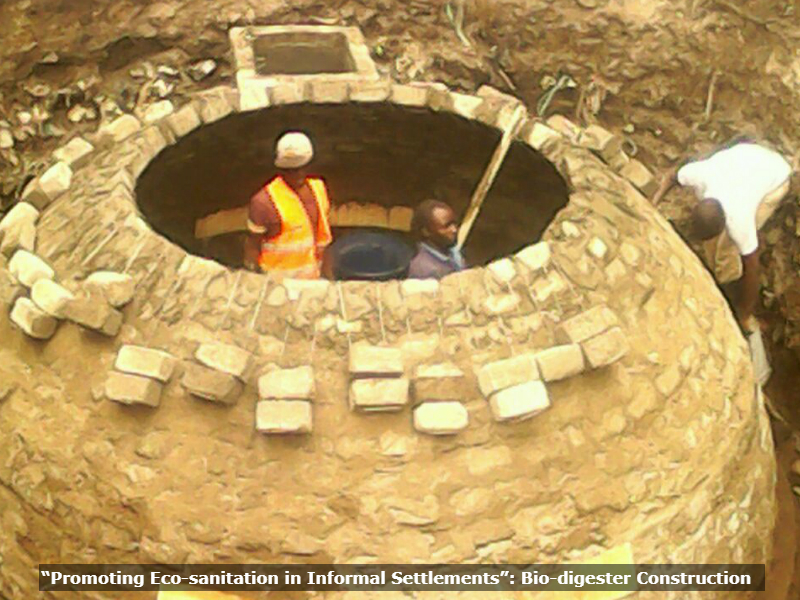At BSHF we were very interested to learn about the European Microfinance Awards and really keen to hear more about some of the great practice being identified. We have been running the World Habitat Awards since 1985. In searching for and sharing the best examples, we have a lot in common with e-MFP. Our objective is to identify and highlight approaches to housing across the world which make outstanding contributions to people’s living conditions. As a minimum we believe everyone should be able to afford their home, have access to basic services, and be free from the threat of eviction or displacement. This might seem like stating the obvious, but it isn’t something that can be taken for granted.
Over the years, a large range of excellent examples have been identified in the countries of the global North and the global South. From the very beginning, our focus has been not only on the identification of good housing practices but also in the sharing of knowledge and experience to others who can transfer them in their own situations. The first international peer exchange to a World Habitat Award project winner was in 1987 and the exchanges have continued ever since.
Really great approaches recognise, provide and guarantee the right to safe and secure housing; treat people and the environment with dignity; and work collaboratively to get the best out of people and places. Contexts, actors and circumstances vary hugely, but everybody tackling housing faces three crucial ‘sustainability’ challenges – social, environmental and financial:
 Social Sustainability
Social Sustainability
For homes to really work they need to be within a community that also works. Great housing is inclusive; encouraging and enabling wide participation and universal access to a place, for all those who have a stake in it. Genuinely inclusive housing can have a profound impact on the confidence and capacity of communities.
Strong social sustainability can be achieved through interventions to improve people’s health, safety, security, capacity and independence. This might be through training for new skills; education about things like health and hygiene; support for community building; or activities which empower marginalised or oppressed groups.
The World Habitat Awards contain many approaches which have achieved social sustainability. To take one, “The Intercultural Neighbourhood, Argentina” (World Habitat Awards Finalist 2016) created high levels of empowerment and inclusion, and generated substantial impacts through the solidarity this created. The neighbourhood was created through a partnership between the indigenous Mapuche Curruhuinca community and impoverished Creole communities, who had both often been excluded from access to housing. The partnership boasts many great accomplishments including new social enterprises, health education and environmentally sustainable practices. It has created a precedent for government land being handed back to indigenous communities.
Environmental Sustainability
 Environmental sustainability is really important when it comes to housing. Communities face the threat of climate change, the need to protect the environment and preserve limited resources, the danger to health presented by pollution or waste, and the obvious disadvantages of wasting energy.
Environmental sustainability is really important when it comes to housing. Communities face the threat of climate change, the need to protect the environment and preserve limited resources, the danger to health presented by pollution or waste, and the obvious disadvantages of wasting energy.
Some approaches work to protect the environment using materials which are locally sourced, recycled or have low embodied energy to build homes. Others make use of existing buildings or structures instead of building new. It’s also possible to support environmental sustainability in other ways, for example through improving sanitation, or decreasing levels of pollution and waste.
Work led by the Umande Trust, “Promoting Eco-sanitation in Informal Settlements, Kenya” (World Habitat Awards Finalist 2016) provides housing as part of a larger social enterprise which supplies improved toilet and washing facilities in urban informal settlements. The approach improves the health of people living in these communities, and the wider environment. The process of bio-sanitation produces fuel which can be used for cooking and lighting. The proceeds from charging a small fee for use of the facilities are reinvested into activities chosen by the host communities. These range from youth centres to IT rooms, to communal rooms for viewing football matches.
Financial Sustainability
All housing requires funding which can come from many different sources. Over time reliance on external funding can threaten sustained impact, so we look at how activities are funded over the long term.
This might include capacity building (for example in building techniques, and ‘training of trainer’ schemes), so the skills needed to provide homes are embedded in the local community. Good examples of this are “Passive Solar Verandas, Afghanistan (World Habitat Awards Finalist 2016), and “Build Back Safer with Traditional Construction Methods, Pakistan” (World Habitat Awards Finalist 2014). Income generating activities can be set up which reduce dependency on external funding. This might involve developing and supporting social enterprises, entrepreneurial activity, or other approaches to boost the local economy (for example increasing the ability to cater for tourists). Sustainable funding doesn’t happen overnight, but it’s important to think about and plan for.
Microfinance is featured in World Habitat Awards applications fairly regularly. We don’t often see it as the sole source of funding for development, but it can be used to lever in more substantial funding or investment (this was the approach of PASO A PASO: Strategic Alliances for Better Housing, Ecuador, World Habitat Awards Finalist 2007). We also see microfinance used to support capacity building in communities, which is hugely important in ensuring social sustainability. For example the MEDINA Project: Economic Development of Historic Cities in Yemen, (World Habitat Awards Finalist 2012) used microfinance as part of a holistic strategy for urban renewal, so that communities were able to establish a stronger skills base and grow their local economy. Azerbaijan Integrated Community Shelters (World Habitat Awards Finalist, 2007) used microfinance for a similar purpose, to help refugees and internally displaced persons to establish communities with sustainable social and economic infrastructure.
We think there is real potential for microfinance to support safe, secure housing and thriving communities and we would love to see more examples of it. If you have a great example of microfinance supporting housing, please do contact us.
Holistic Housing
Because housing is a basic need, getting it wrong or being denied access to it has a profound impact on individuals as well as society’s health and well-being. Housing as a human right is recognised in international law, but as a global society we are struggling to reduce the number of people that are inadequately housed. It is becoming one of the most pressing social problems of the modern world.
Thousands of people are working to bring together socially, environmentally and financially sustainable solutions to this problem. The best solutions are holistic, drawing together all these elements.
A great example of a holistic approach to housing is being applied in the Global South by our 2016 World Habitat Awards winner: A Roof, A Skill, A Market, delivered by the Nubian Vault Association in several countries in West Africa. A Roof, A Skill, A Market provides environmentally sustainable housing using locally sourced materials to revive the ancient Egyptian architectural approach of using sun-dried mud bricks to create vaulted roofs. These replace the problem of unsuitable materials often used for houses in the Sahel. The Nubian Vault Association works through pan-African collaborations and knowledge exchanges between a wide range of actors. This approach to housing supports economic and social sustainability, providing training to transfer knowledge and skills between communities, as well as benefitting their health through improved housing.
Although the World Habitat Awards only scratch the surface of all the effort being made to make a difference through housing, we hope they help provide an inspiring reminder that change is possible, wherever you are in the world. We’ll be staying up to date with the European Microfinance Awards, eager to discover more great examples of sustainable approaches to housing made possible with microfinance.
See more World Habitat Awards winners and finalists on the BSHF website: https://www.bshf.org/world-habitat-awards/winners-and-finalists
Photo on homepage: Julius Mwelu/UN-Habitat


Comments (1)
Jun 27, 2017, 5:41 pm
Dear Modisa Maphanyane,
Thanks for leaving your message. Could you send your email address to contact@e-mfp.eu so we can follow up with you.
Regards,
Niamh Watters (e-MFP Information Officer)